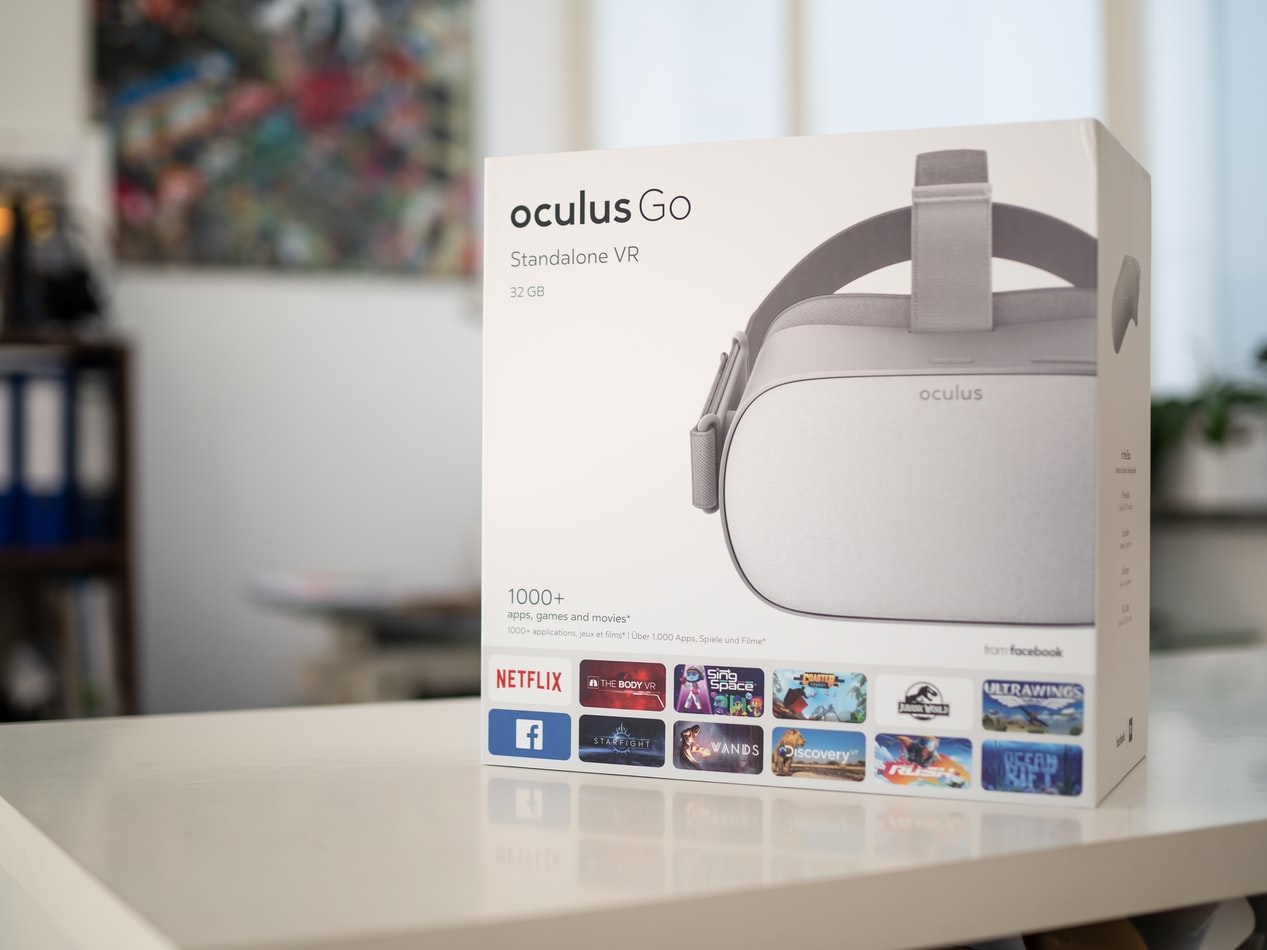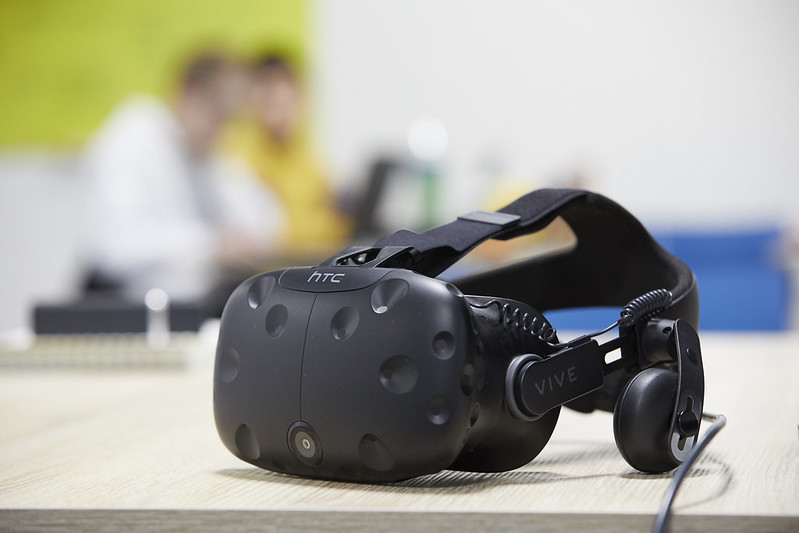
Crédits photos : Marc Mueller (Unsplash)
Virtual reality is being democratized. The development of location-based entertainment is a first clue. The general public is also becoming more and more interested in immersive techniques and attending technology exhibitions, such as Laval Virtual with its 10,000 visitors during the General Public weekend. Technologically less complex and economically more accessible, they even compete with PC headsets. What are the stand-alone headsets on the virtual reality market today and what uses can be made of them?
Standalone, connected, mobile: what are the differences between all the VR headsets?
The current market of virtual reality hardware offers a wide variety of materials. As for VR headsets, there are three types for different needs and uses: standalone, connected and mobile. Each headset has a different target, in terms of the uses the user can make of it, which depend on the technical performance of the device. A mobile headset will not be used in the same way as a connected headset. But then, which VR headset to choose?
Mobile headsets: the most accessible of the market
When you’re a novice, the first thing you look for is a headset that’s easy to use and the price won’t scare you off. Mobile headsets are therefore an appropriate choice. At first impression, they look like a classic VR headset, taking the shape of a box that you put on your head. Except it needs a smartphone to work. Indeed, the user must place his mobile phone which will then serve as a screen and device to launch applications. The mobile headset is equipped with glass lenses that allow the image to be split and distributed to each eye.
In the mid-2010’s, with the release of the first VR headsets as we know them today, several mobile headsets entered the market, such as the Samsung Gear VR in 2015 and the Google Daydream View in 2016. Google has even designed a low-cost device to allow everyone to experience virtual reality. The Google Cardboard is a mobile headset made of cardboard that you can assemble yourself and that costs only €15 Moreover, the price remains the main argument for these mobile headsets which vary around €100. However, their use is limited due to the fact that performance depends entirely on the smartphone used. Soon they were replaced by the first standalone headsets that emerged in 2017. Today, mobile headsets are at the end of their useful life, so the Google Daydream VR is becoming obsolete.

The Google Cardboard, a cardboard VR headset – Photo credits: L’Ère Numérique
Standalone headsets catch up with connected headsets
On the other hand, connected headsets offer optimal performance and a much more complete use. These virtual reality headset work through a computer to which they are connected by a wire. The first headsets in the history of VR are connected headsets, e.g. the Oculus Rift in 2012 and the HTC Vive in 2015. These headsets enable complex immersive experiences. They offer a complete follow-up of the user, i.e. his head and body. The image is also much more faithful thanks to a significantly improved resolution. But their high price does not allow private use. That’s why they’re usually headsets for professionals and developers, like the HTC Vive Pro.
However, the line between connected and standalone headset is gradually narrowing. Today, standalone headsets -that is, without a wired connection- are multiplying and becoming more complex, sometimes offering full motion tracking or hand tracking. Recently, at CES 2020 in Las Vegas, the Chinese company Pico unveiled the Neo 2, the first standalone headset with integrated eye-tracking. Now, standalone headset systems have no reason to be ashamed of their technical performance, competing increasingly with the most sophisticated devices on the virtual reality market. This eliminates the need for a high quality computer at a high cost since the entire operating system is integrated into the headset.
Connected VR headsets like the HTC Vive are connected to a computer by a wire. – Photo credits : Prisma
From Pico to Oculus, the leading suppliers of standalone headsets
A large variety of headsets and uses
More than two years after the launch of the first standalone headset for virtual reality, the Pico Goblin, a multitude of devices have come onto the market. The project of the Chinese all-in-one headset specialist has started a wave among other major manufacturers. Shortly afterwards, in the year 2018, the Facebook giant’s Oculus Go was launched. It is one of the first standalone headset to enter the virtual reality market. For example, when compared with newer headsets, it does not offer full body tracking, but its technical quality makes it easy to play a game or watch a movie. The Oculus Go remains a reference in its category with a very good quality/price ratio.
In comparison, the Lenovo Mirage Solo is twice the price, €310 versus €160. It’s a direct competitor to the Facebook headset, which also has 3DoF motion tracking. Nevertheless, it stands out for the quality of its resolution, offering a 4K image, and it also offers an augmented reality view. Moreover, the addition of a specifically designed controller allows 6DoF motion tracking. When it was released, the Lenovo headset was the proof of a clear technical improvement in standalone headset technology.
Just like the Oculus Go, the Lenovo headset is intended for the general public and therefore for special uses. But very quickly, the professional market became interested in the potential of standalone headset. In 2018, HTC embarked on the adventure by launching the Vive Focus. Initially marketed only in China, it then opened up to the American market. The HTC Vive Focus is intended to be a high-end standalone headset exclusively for business use such as training. The second version of the series, the Vive Focus Plus, offers 6DoF motion tracking as well as much more powerful lenses that significantly reduce the grid effect. With professionals as a new target, we can imagine standalone headset increasingly becoming adapted to complex virtual reality experiences.
Standalone headset at the cutting edge of technology
In 2019, the standalone headset market accelerated with the release of the Oculus Quest in May. Some people already consider it to be the best at the moment. This is an improved version of the Oculus Go. In contrast, it is equipped with 6DoF motion tracking thanks to its two controllers. It also has a better processor and a much sharper screen thanks to an improved resolution, better than its sister model the Oculus Rift. All these performances enable more and more immersive and convincing experiences. Furthermore, in December 2019, Oculus announced the addition of hand tracking to its Quest, thanks to sensors located at the four corners of the visor. It’s a first for standalone headsets-which use advanced technologies to compete with connected headsets.
Similarly, Pico unveiled the second version of its Neo headset at CES 2020, held 7th-10th January in Las Vegas. The Pico Neo 2 is the first headset to have integrated eye-tracking. Provided by Tobii, it powers the eye tracking and the foveal rendering which allows to get as close as possible to human vision thanks to an automatic focus. There are no public release planned for the moment, as the headset is primarily intended for professional use. But this announcement sees the rise of standalone headset devices, which are becoming more and more powerful to the point of being used for much more complex experiences than a video game.
Mobility, performance and ease of use
Standalone headset have become serious competitors to the connected headsets, which are mostly used today. These devices have indeed improved considerably. Today, their performance allows professional use, with all the advantages of a standalone headset: mobility, accessibility and independence. Their development also brings virtual reality to the general public. Easy to use, the standalone headset also does not require a high-performance PC to operate. So you don’t have to be a freak tech to get into the VR/AR adventure.
However, one of the disadvantages of these standalone headset systems is that they do not allow access to immersive content. Each headset has its own platform with an application shop. This varies from brand to brand. The contents can therefore sometimes be limited. As part of the recent release of the Oculus Quest, Facebook has deleted this inconvenience. Using a technology called Oculus Link, a Quest can be transformed into its connected equivalent, the Rift. By plugging the Quest to a PC, the user can access a larger catalog of applications through online platforms such as SteamVR. This provides access to more advanced virtual reality experiences on a standalone headset.

Sources: Digital Trends, Road to VR, The Wirecutter



